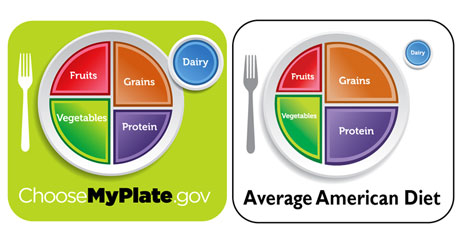



- Viagra
- Sildenafil Citrate (TP)
- Sildenafil Citrate TEVA
- Tadalafil TEVA
- Tadalafil ACCORD
- Tadalafil DAILY
- Vardenafil TEVA
- Vardenafil ZYDUS
- Sildenafil Citrate (GS)
- Cialis
|
Is the USDA’s New Food Plate Pie in the Sky?
2011-06-30
|
Is the USDA’s New Food Plate Pie in the Sky?

WEDNESDAY, June 8, 2011 (Health.com) — Last week the U.S. Department of Agriculture (USDA) unveiled MyPlate, a new food icon designed to tell Americans how to divvy up their diet among the five major food groups. The icon is simpler and easier to understand than the food pyramid it replaced, but it’s largely a cosmetic change—MyPlate is based on the same dietary guidelines as the pyramid.
“With the new icon, people really get the sense that they can take some immediate action by comparing their plate to MyPlate,” says Jackie Haven, RD, director of the nutrition marketing and communication division at the USDA’s Center for Nutrition Policy and Promotion, in Alexandria, Va.
For most people, the comparison won’t be favorable. Comparing the ideal proportions of MyPlate to those of the typical American diet is like holding MyPlate up to a fun-house mirror: The grains and protein categories are stretched out; fruits, vegetables, and dairy are shrunk down; and the plate—unlike the food pyramid—doesn’t even acknowledge the fats, oils, and sugar that are prevalent in the American diet.
The USDA’s new slogan is “Make half your plate fruits and vegetables,” but as the graphic above shows, fruits and vegetables make up only about one-third of the diet of the average adult man. (Although the illustration uses data for men only, diet trends are similar among women.)
The average man consumes about 50% fewer servings of fruits and dairy and 30% fewer servings of vegetables per day than the USDA recommends for a 2,000-calorie diet—even though the average Joe consumes about 2,500 calories a day, according to the Centers for Disease Control and Prevention.
Where do all those extra calories come from? A good chunk is empty calories—foods that are high in fat and sugar, but have very little nutritional value, aka, junk food.
The average American eats between three and four times more oil, fat, and sugar than the USDA recommends, but those ingredients aren’t considered a food group and don’t even have a place on MyPlate.
Those omissions hide some serious problems in the American diet, and could make it hard for Americans to use the plate to make good food choices, says Christina Munsell, RD, a research assistant at Yale University’s Rudd Center for Food Policy & Obesity, in New Haven, Conn.
The MyPlate icon is simpler and easier to decipher than the “information overload” of the food pyramid, Munsell says, but that simplicity means that some smaller messages get lost, such as the amount of fat and sugar that’s acceptable to eat, the distinction between refined grains (like white bread) and whole grains, or fatty meats and nonmeat sources of protein, and portion size.
“If they had a way to communicate portion size—like your grains should be the size of a fist—that may have been really beneficial, because portion sizes are a huge problem today,” Munsell says.





